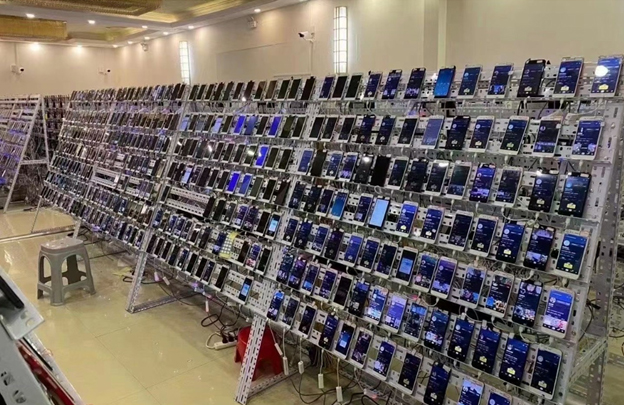Market Pulse
As the crypto landscape matures, the focus is increasingly shifting from purely digital assets to projects that blend blockchain innovation with tangible, real-world utility. Among these emerging narratives, Decentralized Physical Infrastructure Networks, or DePINs, are rapidly gaining prominence. Representing a paradigm shift in how we build, maintain, and monetize essential infrastructure, DePINs leverage blockchain technology and token incentives to create community-owned and operated networks spanning everything from wireless connectivity to energy grids. This burgeoning sector promises not only to disrupt traditional industries but also to unlock unprecedented opportunities for decentralized participation and investment, marking a significant evolution in the application of distributed ledger technology.
Understanding the DePIN Phenomenon
At its core, a DePIN project aims to decentralize the creation and operation of physical infrastructure. Instead of relying on a single corporate entity or government to build and manage networks, DePINs distribute these responsibilities among a global community of participants. These participants are incentivized, typically with native blockchain tokens, to contribute resources such as hardware (e.g., Wi-Fi hotspots, data storage devices, environmental sensors) or labor (e.g., mapping data collection). This decentralized model fosters resilience, reduces operational costs, and potentially offers more efficient and accessible services to end-users.
Key characteristics that define DePINs include:
- Decentralized Ownership: Infrastructure is owned and operated by a network of independent participants, not a central authority.
- Token Incentives: Native cryptocurrencies reward contributors for providing and maintaining network resources, creating a sustainable economic model.
- Real-World Utility: DePINs deliver tangible services that have direct applications in the physical world, moving beyond purely digital use cases.
- Community Governance: Many DePIN projects integrate DAO (Decentralized Autonomous Organization) principles, allowing token holders to vote on network upgrades and strategic decisions.
The Investment Thesis for Decentralized Infrastructure
For investors, DePINs present a compelling narrative rooted in the intersection of digital innovation and tangible assets. The investment thesis often hinges on the network effect and the value accrual mechanisms of their native tokens. As more participants join and contribute, the utility and coverage of the physical network grow, theoretically increasing demand for the underlying service and, consequently, the value of the network’s tokens. These tokens can represent ownership, access rights to services, or governance power, creating a multi-faceted value proposition.
Furthermore, DePINs offer a unique blend of traditional infrastructure investment characteristics—such as predictable revenue streams from providing essential services—with the high growth potential and disintermediation benefits inherent to blockchain. This appeals to a diverse range of investors, from venture capitalists seeking disruptive technologies to crypto enthusiasts looking for projects with concrete, real-world impact and long-term sustainability.
Pioneering DePIN Projects and Use Cases
Several projects are already demonstrating the transformative power of the DePIN model across various sectors:
- Decentralized Storage: Projects like Filecoin and Arweave allow users to rent out unused hard drive space, creating a global, resilient, and censorship-resistant data storage network that competes with traditional cloud providers.
- Wireless Connectivity: Helium built a decentralized wireless network where individuals host hotspots, earning tokens for providing coverage. This model extends to 5G infrastructure with subDAOs focusing on specific services.
- Mapping and Geospatial Data: Hivemapper incentivizes drivers to collect street-level imagery, building a decentralized global map that offers a privacy-preserving alternative to conventional mapping services.
- Energy Grids: Emerging projects explore tokenizing renewable energy production and distribution, allowing for peer-to-peer energy trading and more efficient grid management.
These examples illustrate how DePINs are addressing the limitations of centralized infrastructure, offering greater efficiency, lower costs, and enhanced resilience.
Challenges and the Road Ahead
Despite their promising potential, DePINs face significant hurdles. Bootstrapping these networks requires substantial initial capital and a critical mass of participants willing to invest in hardware and contribute resources. Regulatory uncertainty also looms large, as governments grapple with how to classify and oversee decentralized infrastructure. Technical challenges related to scalability, data integrity, and seamless integration with existing systems also need to be continuously addressed.
However, the long-term vision for DePINs remains incredibly compelling. As blockchain technology matures and hardware costs decrease, DePINs could democratize access to essential services, foster global collaboration, and redefine ownership models for the digital age. They represent a fundamental shift towards more resilient, efficient, and community-driven physical infrastructure.
Conclusion
Decentralized Physical Infrastructure Networks stand out as a pivotal development in the evolution of the crypto ecosystem. By bridging the gap between blockchain technology and real-world assets, DePINs offer a tangible pathway for digital innovation to deliver concrete value, creating new economic paradigms and fostering community-driven solutions to age-old infrastructure challenges. While the journey ahead is complex and fraught with obstacles, the potential for DePINs to reshape industries and redefine our interaction with the physical world positions them as a key narrative to watch for investors and technologists alike.
Pros (Bullish Points)
- Offers tangible real-world utility and revenue streams for blockchain.
- Incentivizes global, community-driven infrastructure development.
Cons (Bearish Points)
- Requires significant capital and hardware adoption to bootstrap networks.
- Faces regulatory uncertainties and scalability challenges in early stages.
Frequently Asked Questions
What exactly is a DePIN?
DePIN stands for Decentralized Physical Infrastructure Networks, which use blockchain and token incentives to build, maintain, and operate real-world infrastructure like wireless networks, data storage, and energy grids.
Why are DePINs considered important for crypto?
They bridge the digital and physical worlds, providing concrete utility beyond speculative assets by creating tangible products and services, thus driving mainstream adoption of blockchain.
What are some examples of DePIN projects?
Prominent examples include Filecoin (decentralized storage), Helium (decentralized wireless), and Hivemapper (decentralized mapping).



